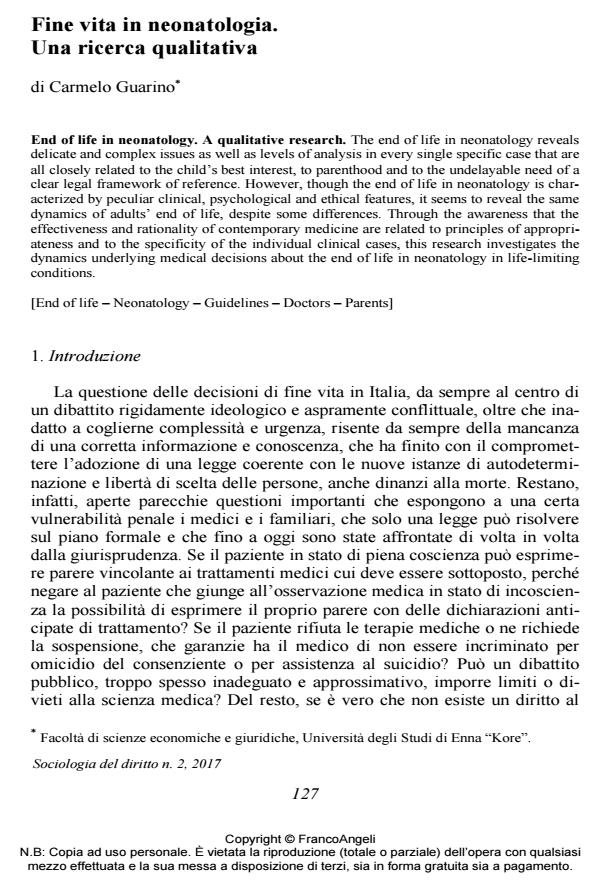End of life in neonatology. A qualitative research
Journal title SOCIOLOGIA DEL DIRITTO
Author/s Carmelo Guarino
Publishing Year 2017 Issue 2017/3
Language Italian Pages 26 P. 127-152 File size 463 KB
DOI 10.3280/SD2017-003006
DOI is like a bar code for intellectual property: to have more infomation
click here
Below, you can see the article first page
If you want to buy this article in PDF format, you can do it, following the instructions to buy download credits

FrancoAngeli is member of Publishers International Linking Association, Inc (PILA), a not-for-profit association which run the CrossRef service enabling links to and from online scholarly content.
The end of life in neonatology reveals delicate and complex issues as well as levels of analysis in every single specific case that are all closely related to the child’s best interest, to parenthood and to the undelayable need of a clear legal framework of reference. However, though the end of life in neonatology is characterized by peculiar clinical, psychological and ethical features, it seems to reveal the same dynamics of adults’ end of life, despite some differences. Through the awareness that the effectiveness and rationality of contemporary medicine are related to principles of appropriateness and to the specificity of the individual clinical cases, this research investigates the dynamics underlying medical decisions about the end of life in neonatology in life-limiting conditions.
Keywords: End of life - Neonatology - Guidelines - Doctors - Parents
Carmelo Guarino, Fine vita in neonatologia. Una ricerca qualitativa in "SOCIOLOGIA DEL DIRITTO " 3/2017, pp 127-152, DOI: 10.3280/SD2017-003006